¿Acto vandálico o infraestructura en ruinas?
Un incidente urbano aparentemente menor pone de relieve la fragilidad de la convivencia citadina donde lo inesperado, la burocracia y la indiferencia son parte del paisaje cotidiano.
To read this article in English click here
I. El incidente
Salimos a tiempo. Íbamos a la colonia San Rafael, en el centro de la Ciudad de México, para recorrer sus calles en un tour arquitectónico por ese emblemático barrio que vivió su auge durante el porfiriato. Nuestro destino era Jaime Sullivan 43, muy cerca del Monumento a la Madre, punto de partida del recorrido.
Tomé el Circuito Interior por Alfonso Reyes rumbo a La Raza, como sugirió la aplicación de navegación Waze. Como no tendríamos que abandonar esa vía rápida sino hasta la Salida 19 —unos tres kilómetros más adelante—, para conectar con Parque Vía y luego con Sullivan, avancé por el carril de alta velocidad.
Cruzamos el puente peatonal que lleva a Chapultepec y luego el vehicular de Avenida Paseo de la Reforma. Fue entonces, justo antes de pasar bajo el puente que une las calles de Lieja con Leibnitz, cuando un estruendo seco y brutal retumbó dentro del auto.
Vista del parabrisas estrellado y roto desde el interior, al día siguiente del desaguisado. Foto Eduardo García
Seguramente parpadeé. No lo sé. Pero no me agaché ni giré el volante. Seguí de frente como si nada, más allá del espanto inicial provocado por la especie de detonación interna. En segundos, mi mente reaccionó: el parabrisas se había convertido en una telaraña de vidrio roto por el golpe. Casi en el medio estaba el núcleo de ese intrincado estampado expansivo. Concluí que alguien nos había lanzado algo desde el puente que acabábamos de dejar atrás.
Volteé hacia Elisabeth, mi esposa, para asegurarme de que estuviera bien. Respondió que sí, observando la lluvia de astillas sobre el asiento, el piso y su ropa. Miré por el retrovisor para comprobar si alguien nos seguía. Comenté que no me detendría por temor a que quien arrojó el objeto estuviera coordinado con alguien más para asaltarnos más adelante. Había oído historias de atracos así.
Ambos quedamos perplejos, en silencio, tratando de entender lo ocurrido. La parte superior del tablero, los asientos, la consola, los paneles laterales y el piso estaban rociados de esquirlas.
Curiosamente, no sentí que mi pulso se acelerara como cuando alguien te asusta. Estaba tranquilo, pese a que el episodio era para espantarse. Mientras rodábamos por el Circuito, noté que el objeto había perforado el parabrisas. Elisabeth se agachó, lo recogió y me mostró la roca que —probablemente— nos arrojaron desde el puente.
La roca que probablemente se convirtió en proyectil y que fue lanzada desde el puente. Foto Eduardo García
Aunque no podíamos descartar del todo un desprendimiento accidental, nos parecía improbable. Un desmoronamiento difícilmente habría generado la velocidad y fuerza necesaria para perforar un parabrisas, más cuando es un vidrio laminado diseñado para resistir impactos.
Seguimos. A medida que nos acercábamos al destino, concluimos que no había mucho más que hacer que reportar el incidente a la policía y al seguro. También optamos por seguir con el recorrido. Dejé a Elisabeth en el punto de encuentro —al bajar se sacudió los fragmentos de vidrio— y busqué dónde estacionarme para pedir la asistencia del seguro. Me uniría más tarde al tour.
Al dar vuelta en Serapio Rendón vi una patrulla. Bajé la ventana y le conté al oficial lo sucedido. Señalé el parabrisas estrellado. De inmediato, reportó el incidente desde su celular. Unas cuadras adelante encontré dónde detenerme.
Tras tomarme un momento para asimilar lo ocurrido y observar el estado del auto —todo ocurió muy rápido—, bajé, me sacudí también la ropa, el tapete de enfrente y el de al lado, y busqué un trapo en el auto para limpiar los asientos. Solo encontré un par de guantes en el estuche de herramientas, suficientes para lo que quería hacer.
Para mi sorpresa, el trámite con Quálitas, mi aseguradora, no requirió la presencia de un ajustador. Por teléfono seguí las instrucciones del representante y, vía el sistema de mensajería instantáneo WhatsApp, envié fotos de mi licencia, de la tarjeta de circulación y de los daños. Más tarde me enviaron por correo electrónico la orden para presentarme el lunes en un taller especializado en parabrisas.
Mientras hacía esto, confirmé lo que ya habíamos hablado Elisabeth y yo: era importante denunciar el incidente. Dentro de todo, habíamos tenido suerte. Salimos ilesos, sin un rasguño. El coche apenas averiado. Y, lo más importante, no fuimos causa de una tragedia mayor. Pero ese golpe absurdo, pareció también una advertencia. En esta ciudad, lo que no se ve también puede herir. Lo sucedido no debía quedar sin registro. Aunque sabíamos que sería difícil identificar al responsable de lanzar la piedra, en plena luz del día, en una vía de alta velocidad —si nuestra hipótesis era correcta— el hecho debía consignarse. Si algo similar volvía a ocurrir, otros podrían no correr con la misma fortuna. Las autoridades debían saberlo, al menos para tomar medidas preventivas.
Tras concluir los trámites con la aseguradora, llevé el auto a un estacionamiento público donde pedí aspirar el interior para eliminar los restos de vidrio. Luego me reuní con el grupo. Afortunadamente, pudimos disfrutar del recorrido, más cuando culminó en lo que fue el Cine Ópera: una monumental construcción art déco.
Hoy, el edificio está tristemente en ruinas por los daños estructurales del sismo de 1985 y su cierre definitivo en 1998 tras un concierto que dejó afectaciones adicionales.
La fachada, sin embargo, con sus cerca de 12 metros de altura y las dos colosales figuras femeninas que enseñan las máscaras de la comedia y la tragedia, conserva una elegancia imponente y da testimonio de la importancia cultural que tuvo el recinto en la época de oro del cine mexicano. De chico, yo llegué a asistir, aunque para entonces ya había dejado atrás sus años de esplendor. Aun así, contemplar hoy su fachada e imaginar la grandeza que alguna vez tuvo —por dentro y por fuera— es una experiencia sobrecogedora.
II. La denuncia
El lunes llevé el auto al taller indicado por Quálitas. No hicieron la reparación por falta de la pieza —que, a la fecha, sigo esperando—. Luego, tras aparcar el auto en casa, me dirigí a la Alcaldía Cuauhtémoc, en la colonia Buenavista, para levantar la denuncia. Ahí, la policía de investigación me indicó que debía acudir a otro módulo territorial: el incidente había tenido lugar en otra demarcación.
Ese módulo no estaba lejos, a cinco cuadras, en la colonia Santa María la Ribera, en la calle del mismo nombre. Caminé hasta allá por ese otro barrio histórico. Al entrar, un joven me atendió en una pequeña mesa. Tomó mis datos en un cuadernillo con un bolígrafo y me pidió sentarme y esperar en una especie de sala con ocho sillas. Compartí ese reducido espacio con otros denunciantes: uno sufrió un robo en un local de tacos; el otro, el robo de su cartera y celular en un antro.
Tras una hora y veinte minutos, decidí irme. Tenía una cita a las cuatro. Ninguno habíamos sido llamado a declarar y era poco probable que me atendieran pronto. El joven de la recepción me sugirió volver temprano al día siguiente, a las 9:00 a.m., para evitar esperas.
Así lo hice al día siguiente. No pasaron ni cinco minutos tras llegar cuando me llamaron a un cubículo del Ministerio Público. La Fiscalía CUH-5 estaba bastante limpia, bien iluminada, con señalamientos claros y advertencias visibles sobre cómo actuar ante posibles actos de corrupción.
Vista exterior del automóvil, ya estacionado en el taller especializado para su reparación. Foto Eduardo García
Afortunadamente, no enfrenté nada de eso. La licenciada que levantó el acta y el agente de investigación —quien buscó conmigo cámaras en la zona del incidente y quien me dijo que no había— fueron amables. Ambos coincidieron en que lo más probable era que alguien —quizá un indigente o un miembro del campamento cannábico que se había instalado hacía tres años en la Estela de Luz— hubiera arrojado la piedra.
Todo el personal, salvo el recepcionista, parecía contar con el equipo básico de cómputo. Incluso, pude observar como otra agente investigadora revisaba un video “cuadro por cuadro” en el que supongo algo irregular ocurrió. Aun así, fue imposible no sentir haber entrado a esa dimensión paralela en la que tristemente vive la burocracia mexicana. En la que uno recibe atención, pero no se siente atendido; en la que los funcionarios cumplen, pero como si fuese un favor, no un servicio público.
No quiero ser duro con el personal del 'módulo territorial'. El aparente desgano con el que trabajan parece deberse más al sistema en el que operan que a fallas individuales. Si la Fiscalía General de Justicia de la Ciudad de México ofreciera mejores condiciones laborales —con retribuciones dignas, oportunidades de desarrollo y una carrera profesional con incentivos claros— el desempeño general sería mucho más eficaz.
El trámite tomó hora y media. Tuve que repetir varias veces lo sucedido y deletrear, una y otra vez, el nombre de la calle Leibnitz, a pesar de haber entregado un relato por escrito. Todo eso, pienso, pudo haber tomado 30 minutos. Pero mientras las oficinas públicas no fomenten el profesionalismo ni reconozcan los logros con incentivos reales, difícilmente cambiará la actitud del personal. En ese terreno, las autoridades aún tienen mucho por hacer.
No obstante, a pesar de esto, el trámite cumplió su propósito y la experiencia resultó valiosa.
III. Conclusión
Después de todo, logré mi objetivo: dejar constancia oficial de lo ocurrido.
Aunque el incidente no tuvo mayores consecuencias, no fue menor y, al menos desde mi perspectiva, debe ser tomado en serio. Mi denuncia no buscaba que con ella la policía fuese a capturar en breve al responsable. Más que nada intentó demostrar que los ciudadanos queremos confiar en nuestras autoridades y que queremos aportar y colaborar.
Pensar que en un territorio tan extenso como el de la Ciudad de México, en el que habitan cerca de nueve millones de habitantes, no vayan a ocurrir en el futuro casos como el que vivimos Elisabeth y yo, es ingenuo. Pero no lo es creer que, si la mayoría contribuimos —denunciando, ayudando, solidarizándonos—, tendremos una convivencia más segura y agradable.
Ciudades como esta capital no pueden sostenerse ni con solo la buena voluntad de sus ciudadanos ni únicamente con la eficacia institucional. Requieren que ambas partes cooperen. De lo contrario, seguiremos preguntándonos si lo que nos pasa es fruto del azar, de la negligencia, de la incompetencia, de la maldad o del desmoronamiento silencioso e infatigable de la vida pública.
Vandalism or Crumbling Infrastructure?
An apparently minor urban incident highlights the fragility of city coexistence where the unexpected, bureaucracy and indifference are part of the everyday landscape.
by Eduardo García
I. The Incident
We left on time. We were headed to Mexico City’s San Rafael neighborhood for an architectural tour of this emblematic area, which flourished during the Porfiriato. Our destination was Jaime Sullivan 43, near the Monument to the Mother, the tour’s starting point.
I took Circuito Interior via Alfonso Reyes toward La Raza, as suggested by the Waze navigation app. Since we wouldn't need to exit until exit 19 —about three kilometers ahead— I stayed in the express lane.
We passed the pedestrian bridge leading to Chapultepec, followed by the vehicular overpass on Paseo de la Reforma. Then, just before going under the bridge connecting Liège and Leibnitz streets, a sudden, brutal crash rang out inside the car.
View of the shattered and broken windshield from inside the car, the day after the incident. Photo Eduardo García
I probably blinked. I’m not sure. But I didn’t duck or swerve. I kept driving straight, beyond the initial shock of what sounded like an internal explosion. Within seconds, my brain caught up: the windshield had turned into a spiderweb of shattered glass. Near the center was the impact point —the core of the intricate pattern. I realized someone had likely thrown something from the bridge we’d just passed under.
I looked at my wife Elisabeth to make sure she was okay. She said yes, brushing glass shards off her clothes. I checked the rearview mirror in case someone was following us. I said I wouldn’t stop —I feared whoever had thrown the object might be working with someone else to stage a robbery. I’d heard stories like that.
We were stunned and silent, trying to understand what had happened. The dashboard, seats, console, side panels, and floor were all sprinkled with glass.
Oddly, I wasn’t trembling the way you do when something startles you. I felt calm, even though the event had been terrifying. As we continued along the Circuito, I noticed the object had actually pierced the windshield. Elisabeth bent down, picked it up, and showed me the rock —most likely thrown from the bridge.
The rock that likely became a projectile and was thrown from the overpass. Photo Eduardo García
We couldn’t entirely rule out an accidental fall, but it seemed unlikely. A chunk of debris wouldn’t have had the speed or force to pierce laminated glass, which is designed to withstand impacts.
As we neared our destination, we concluded there wasn’t much we could do besides reporting the incident to the police and the insurance company. We also decided to continue with the tour. I dropped Elisabeth off at the meeting point —she shook off the last bits of glass as she got out— and I went to find parking and contact the insurer. I would join the tour later.
As I turned onto Serapio Rendón, I saw a police car. I rolled down my window and told the officer what had happened, pointing to the smashed windshield. He immediately reported the incident from his phone. A few blocks ahead, I found a place to stop.
After taking a moment to process what had occurred, I got out and dusted off my clothes and the dashboard. I looked for a cloth in the car to clean the seats but only found a pair of gloves in the tool kit —enough for the job.
To my surprise, Quálitas, my insurance company, didn’t require an adjuster on site. Following instructions from their call center, I sent photos of my license, registration, and the damage via WhatsApp. They later emailed me a referral for a windshield repair shop.
As I was finishing up, I reaffirmed what Elisabeth and I had already agreed on: it was important to file a police report. All things considered, we were lucky —no injuries, no major damage. Most importantly, we weren’t the cause of a more serious accident. Still, the senseless blow felt like a warning. In this city, what’s out of sight can still harm you. The incident couldn’t go unreported. Even if we couldn't identify who threw the rock —if that’s indeed what happened— the fact needed to be documented. Next time, others might not be as lucky. Authorities needed to know, at the very least to take preventive measures.
Once I was done with the insurer, I took the car to a public garage and asked them to vacuum out the glass. Then I met up with the group. Thankfully, we were able to enjoy the tour —especially its conclusion at the old Cine Ópera, a monumental Art Deco structure.
Today, the building lies in ruins, its structure compromised by the 1985 earthquake and permanently closed since a damaging concert in 1998.
Even so, the façade —with its nearly 12-meter height and two colossal female figures showing the comedy and tragedy masks— retains an imposing elegance and speaks to the cultural importance the venue once held in Mexico’s cinematic golden age.
As a child, I attended screenings there —though it had long passed its prime. Even so, seeing its façade again and imagining the grandeur it once embodied —inside and out— was an overwhelming experience.
II. The Complaint
On Monday, I took the car to the repair shop recommended by Quálitas. They didn’t have the part, so the work was postponed —I'm still waiting. Later, I parked the car at home and headed to the Cuauhtémoc borough office in the Buenavista area to file a police report.
There, an investigative officer told me I had to go to a different district office, as the incident had occurred in another jurisdiction.
That other office wasn’t far —just five blocks away, in Santa María la Ribera, on the street of the same name. I walked there through that other historic neighborhood. Upon entering, a young man at a small desk took down my information by hand in a notebook and asked me to wait in a room with eight chairs. I shared the space with other complainants —one had been robbed at a taco stand; another had his wallet and phone stolen at a nightclub.
After an hour and twenty minutes, I left. I had a 4 p.m. appointment. No one had been called to testify, and it didn’t look like we would be anytime soon. The young man at the front desk suggested I return early the next day at 9 a.m. to avoid the wait.
I did, and within five minutes of arriving, I was called into a Public Prosecutor’s cubicle.
Exterior view of the car, already parked at the specialized repair shop. Photo Eduardo García
The CUH-5 office was clean and well-lit, with clear signage and notices about how to report corruption.
Thankfully, I didn’t encounter any. The lawyer who took my statement and the investigator —who helped me check for nearby surveillance cameras and confirmed there were none— were both courteous. They agreed the most likely scenario was that someone —perhaps a homeless person or someone from the cannabis protest camp that’s been outside the Estela de Luz for three years— had thrown the rock.
All the staff, except the receptionist, seemed to have the basic computer tools they needed. I even saw another agent reviewing footage “frame by frame,” presumably for another case. Still, it was hard not to feel like I’d stepped into that alternate dimension where Mexican bureaucracy exists —where you’re attended to, but not quite cared for; where officials follow procedure, but as if doing you a favor, not providing a public service.
I don’t want to be unfair to the staff at the district office. The apparent indifference with which they work seems more a symptom of the system than of individual shortcomings. If Mexico City’s Attorney General’s Office offered better conditions —decent pay, career paths, and real incentives— overall performance would likely be far more efficient.
The process took about an hour and a half. I had to repeat my story several times and spell out “Leibnitz Street” again and again, despite already having submitted a written report. All of this could have taken half an hour. But until public offices promote professionalism and reward good performance, changing staff attitudes will remain a challenge. There's still much to be done on that front.
Still, the process served its purpose, and the experience was valuable.
III. Conclusion
In the end, I accomplished what I set out to do: officially document what happened.
Although the incident didn’t have serious consequences, it wasn’t minor. At least from my perspective, it warranted being taken seriously. I didn’t expect police to swiftly catch whoever was responsible. More than anything, I wanted to show that we citizens want to trust our institutions—and that we’re willing to do our part.
It’s naïve to think that, in a city as vast and densely populated as Mexico City, incidents like the one Elisabeth and I experienced won’t happen again. But it’s not naïve to believe that if most of us contribute —by reporting, helping, and showing solidarity— we can build a safer, more livable city.
A place like this capital can’t survive on the goodwill of its citizens alone, nor on institutional efficiency alone. It needs both. Otherwise, we’ll keep asking ourselves whether what’s happening to us is the result of chance, negligence, malice, incompetence —or simply the quiet, relentless collapse of public life.

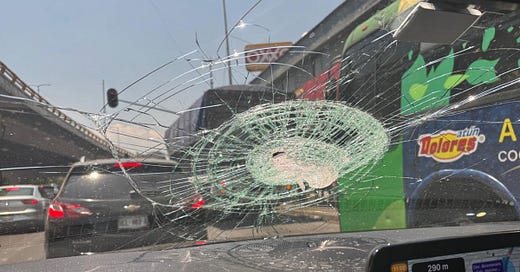



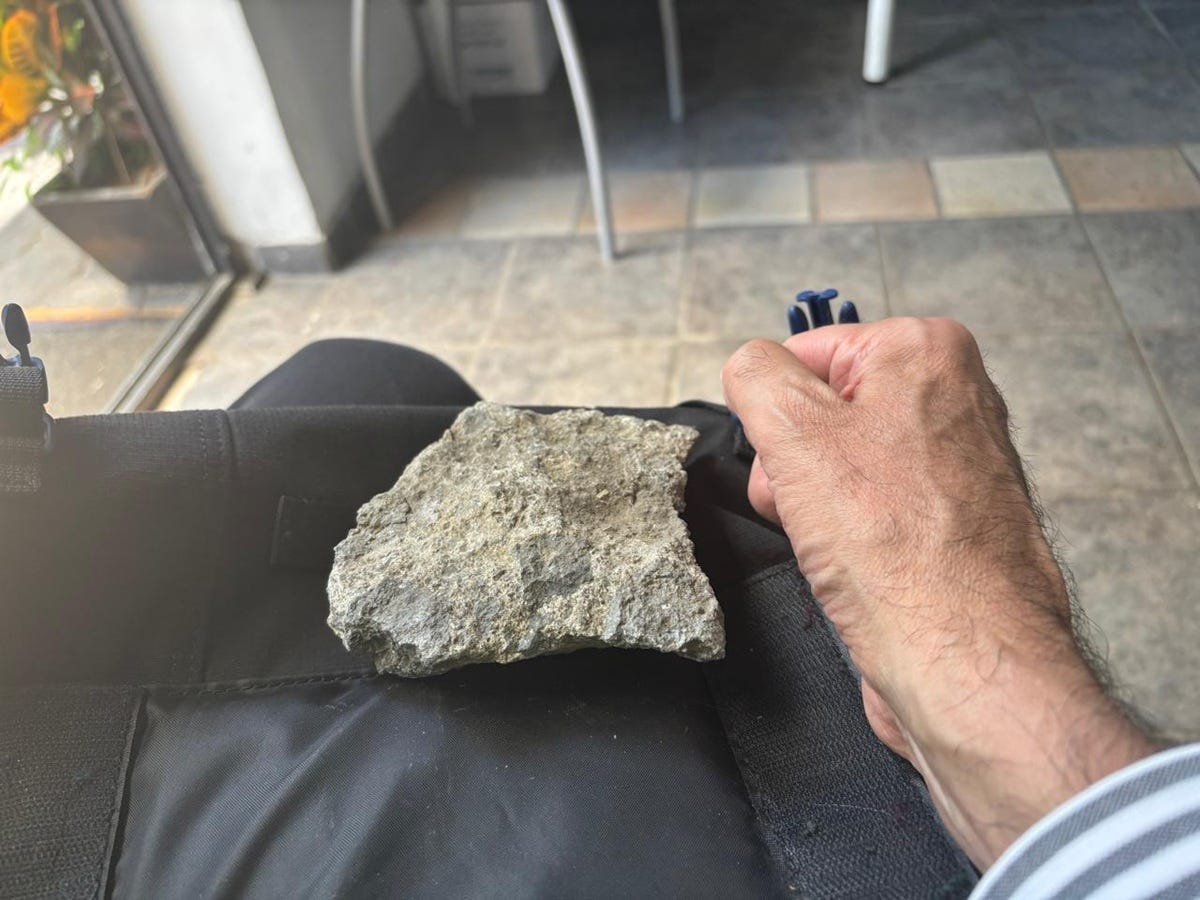
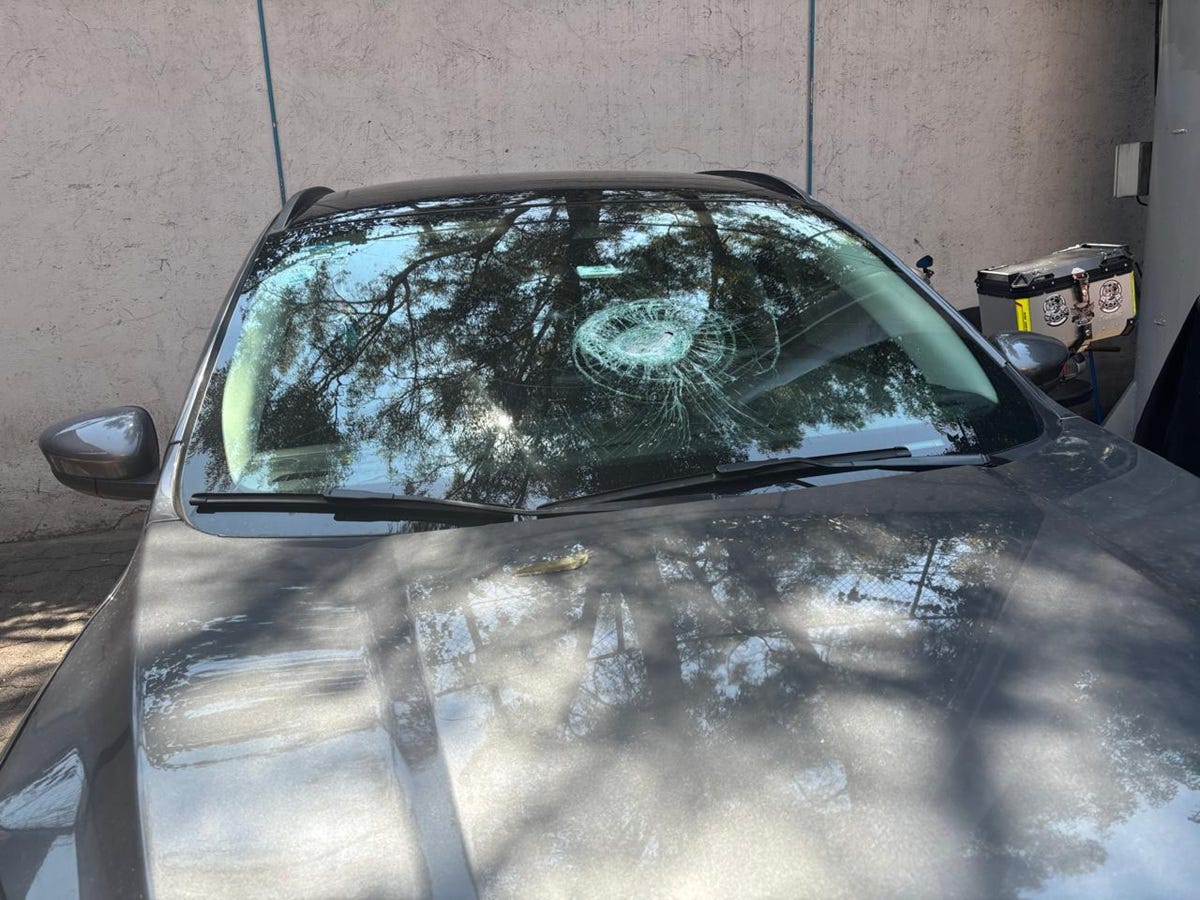
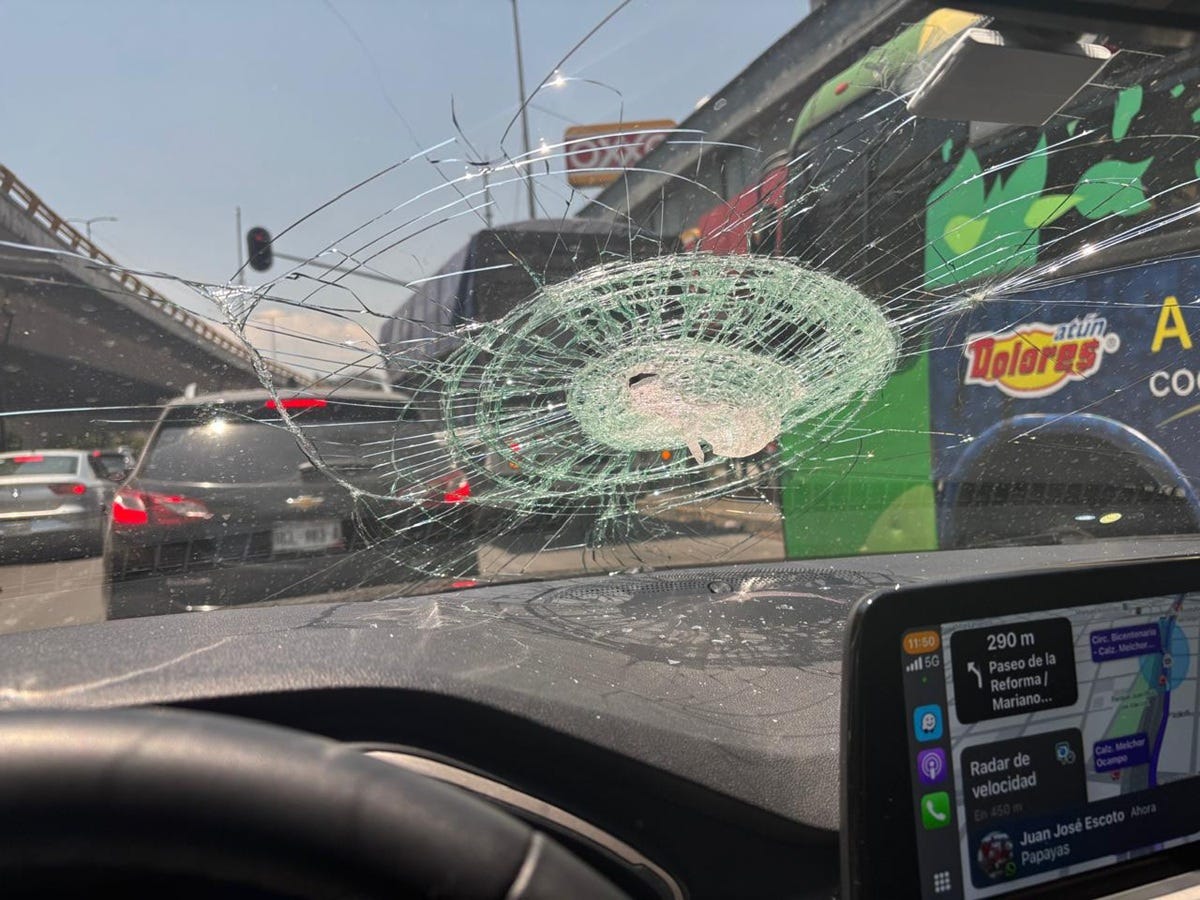
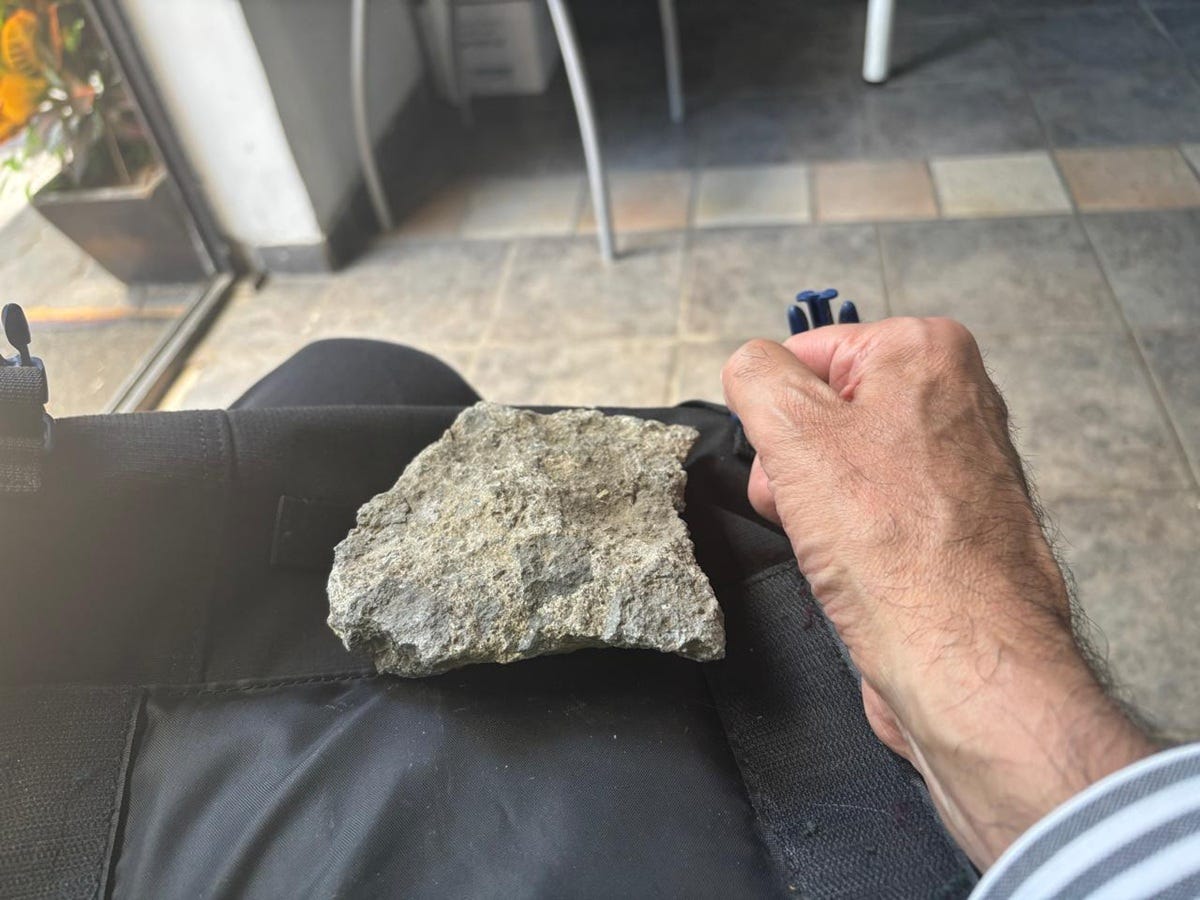
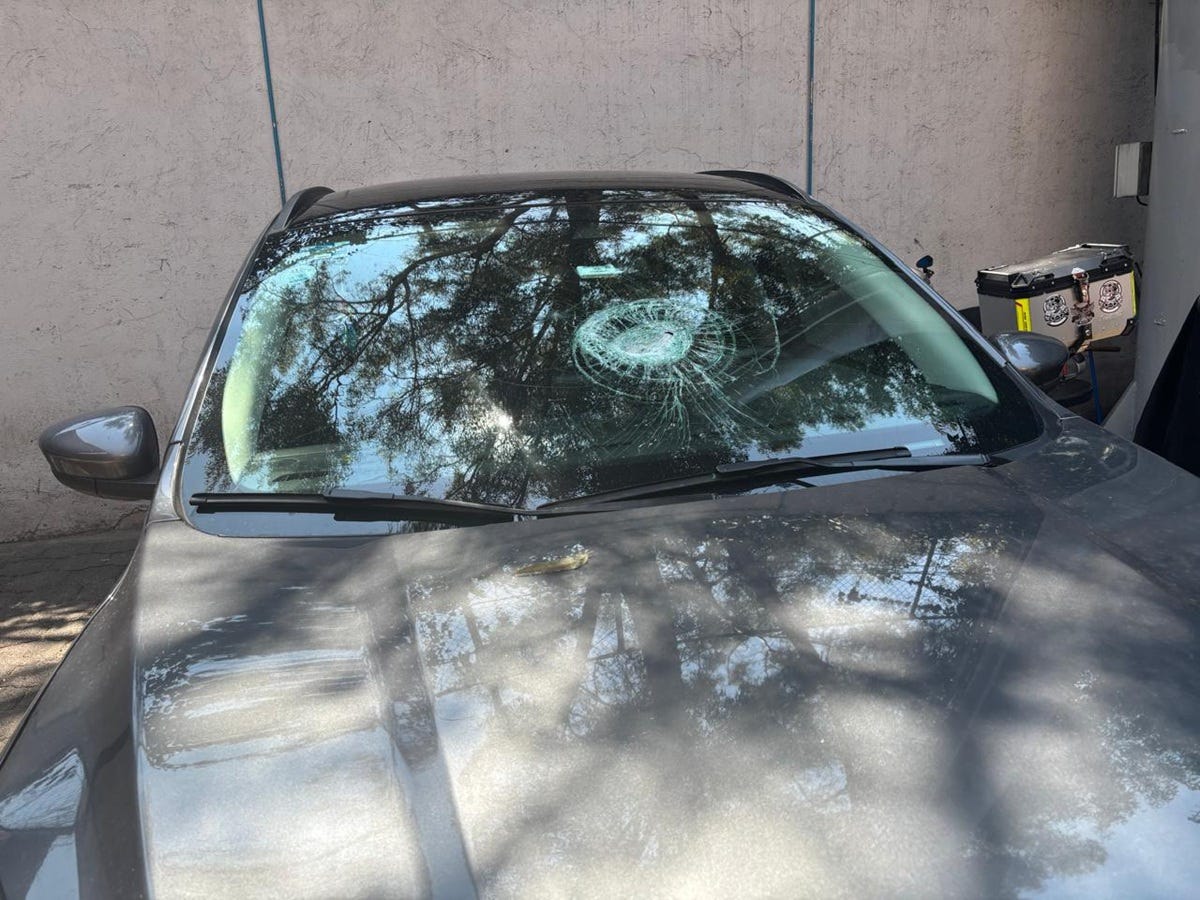
Siento mucho la experiencia mi querido Lalo, pero al mismo tiempo admiro la decisión de pasar por el sistema burocrático para poder presentar tu denuncia. Como lo he dicho antes, no hay peor verdad que la que no se quiere ver. Como ciudadanos queremos que las cosas cambien, pero eso no sucede cuando difícilmente no nos tomamos el tiempo para ver lo que nos rodea. Tristemente el progreso comienza con la educación y apreciación de un trabajo y desgraciadamente en mi querido México muchas veces esto no se lleva a cabo.
CSI Mexico CIty